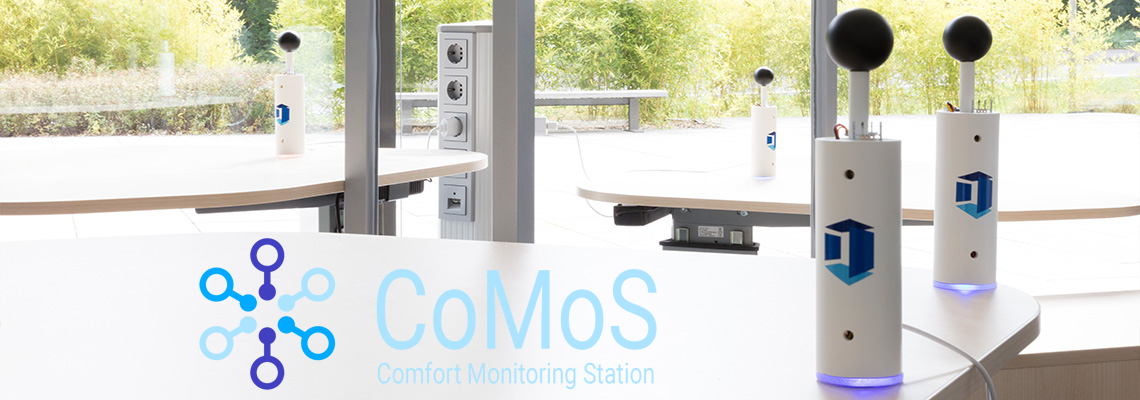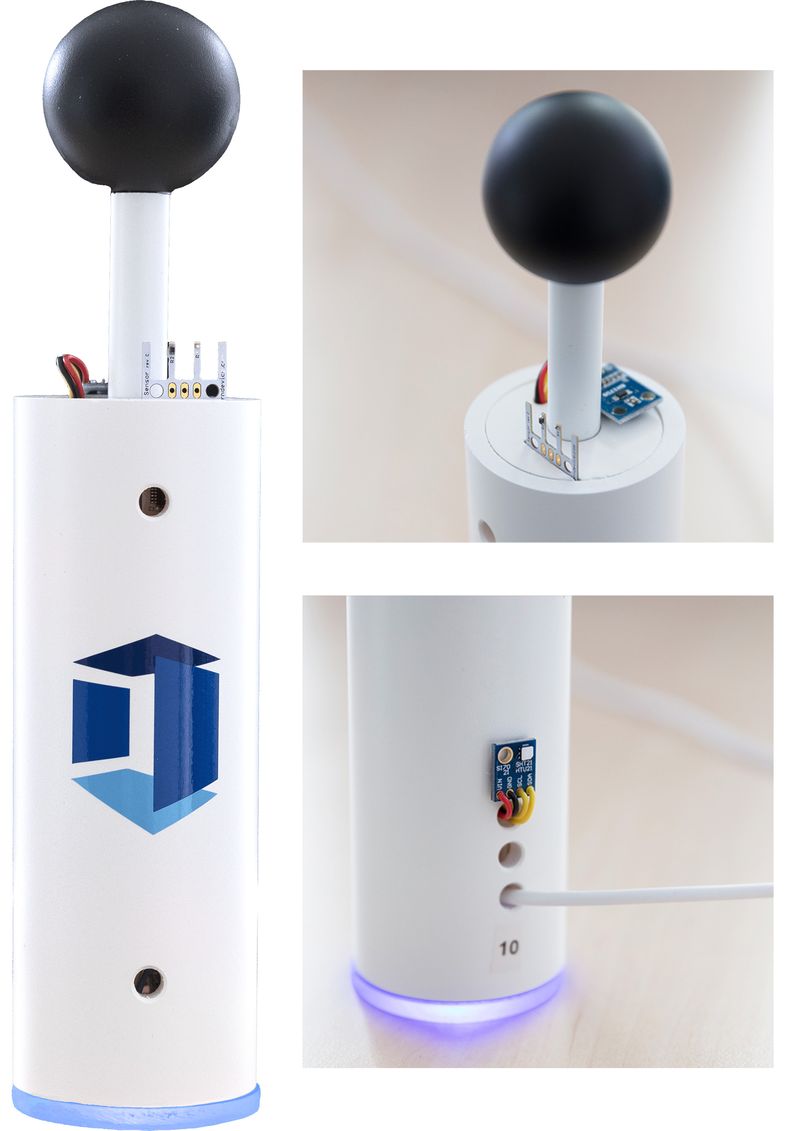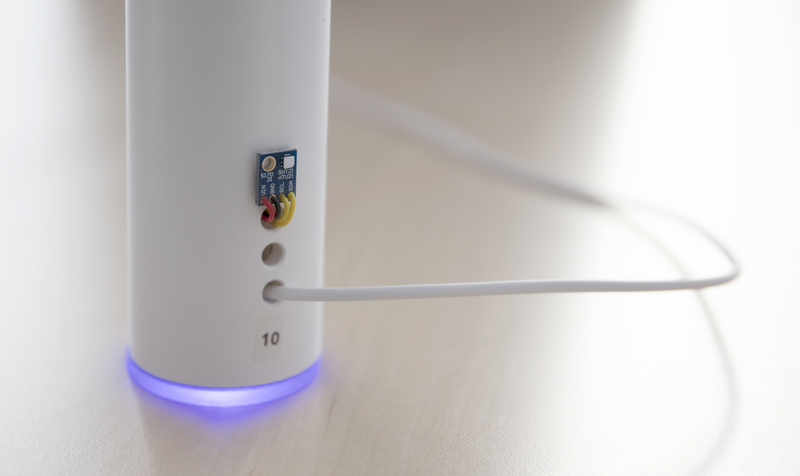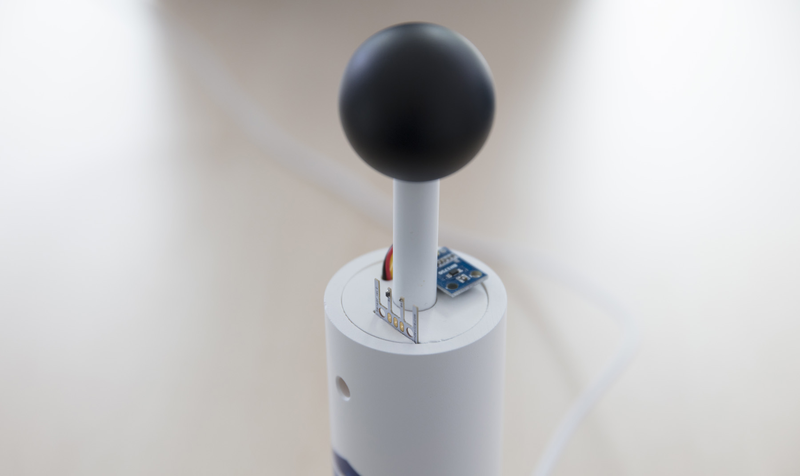
CoMoS - Comfort Monitoring Station
| Duration | from 05/2016 |
| Responsible | Prof. Dr.-Ing. Sabine Hoffmann |
| Team | Mathias Kimmling, Konrad Lauenroth, Sabine Hoffmann |
| Project type | hardware development |
The Internet of Things and the emerging of inexpensive hardware such as sensors and microcontrollers offer new opportunities in building automation. To determine thermal comfort or discomfort at workplaces, a Comfort Monitoring Station - CoMoS - was developed which could be deployed comprehensively in office buildings because of its low investment cost.
The data readings from CoMoS provide the basis for calculating the PMV-index (Predicted Mean Vote). The index describes how the population mean would be likely to rate their thermal sensation under given ambient room conditions. The index can thus serve as a quality criterion for the thermal situation in a building. PMV can take on values from -3 (cold) to +3 (hot), with 0 being a neutral state, i.e. neither too cold nor too hot. The sensor station measures the values required for PMV-calculation by using inexpensive sensors for air temperature, relative humidity, air speed, and globe temperature.
A microcontroller (ESP32/NodeMCU) is the platform for connecting the sensors, controlling the measurement intervals, recording the measurement data, and transferring them via Wi-Fi to a MariaDB database server. In addition, automatic measurement value checking, and error handling is implemented in the software CoMoS. Together with user input on physical activity and clothing factors, the PMV index can be calculated on the database server.
By comparing the PMV values with additionally queried, subjective voting on thermal comfort, systematic measurement errors can be identified, and personal preferences recognized. For this purpose, a graphical real-time display of the measured values and calculated PMV via a Grafana platform is also available.
A network of several CoMoS is used to record the indoor environmental situation in the Living Lab smart office space on an individual workstation basis and thus provides an important data basis for ongoing building simulations and the control of devices in the Personalized Environment.
A detailed instruction and the code of CoMoS were published in the public domain under the following link as an "Instructable". The publication was awarded in a competition by the editorial staff and an independent jury.
Publications:
Kimmling, Mathias, Konrad Lauenroth, and Sabine Hoffmann. 2018. "How to Build a Comfort Monitoring Sensor Station". https://www.instructables.com/How-to-Build-an-Indoor-Comfort-Monitoring-Sensor-S/
Kimmling, Mathias and Sabine Hoffmann. 2019. "Behaglichkeitsmonitoring – flächendeckend und kostengünstig mit der Sensorstation CoMoS". In Bauphysik 41(2):111-119, Berlin, Germany. access on wiley.com



